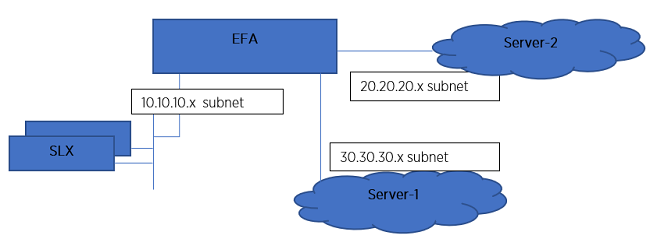Multiple Management IP Networks
EFA is supported on multiple management IP networks and routes, providing access to EFA from servers that are on different subnets.
Overview
The Multiple Management IP (MMIP) Networks feature offers the following support:
- Supports single node and multi-node deployments
- Supports TPVM deployments, server-based deployments, and VM-based deployments
- Supports the configuration of additional management IP networks and routes during EFA installation
- Supports adding and viewing management networks and routes after EFA installation
- Supports deleting management networks and routes after EFA installation
- Supports the migration of the multiple network configuration during the following EFA upgrade scenarios: single node to multi-node and multi-node to multi-node
- Supports up to 6 networks
- Supports the RMA, backup, restore, and upgrade functions

Note
If you do not need multiple management networks, simply reply "no" when prompted during EFA installation or upgrade. For instructions, see the installation and upgrade topics in the Extreme Fabric Automation Deployment Guide, 2.7.0 .MMIP architecture

Assumptions
- In a multi-node deployment, the sub-interface with the VLAN is created under the same NIC as the VIP destination. In a single-node deployment, the sub-interface is created under the NIC that you specified as the host IP installation (if there are multiple NICs). Creating sub-interfaces on different NICs of the server is not supported.
- EFA does not validate connectivity to the newer IP subnets. You are responsible for ensuring reachability.
- Changing IP subnets or IP routes is not supported. To make changes to a management network or network route, you must delete the network or route and then create a new one.
- You can expect about 20 to 30 seconds of downtime when adding or deleting management networks.
- In a multi-node deployment, both nodes have to be up and available during add and delete operations (because sub-interface creation and keepalived changes are unique to the node). Because these are infrequent operations, you should verify that both the nodes are up and in READY state before beginning add or delete operations.

